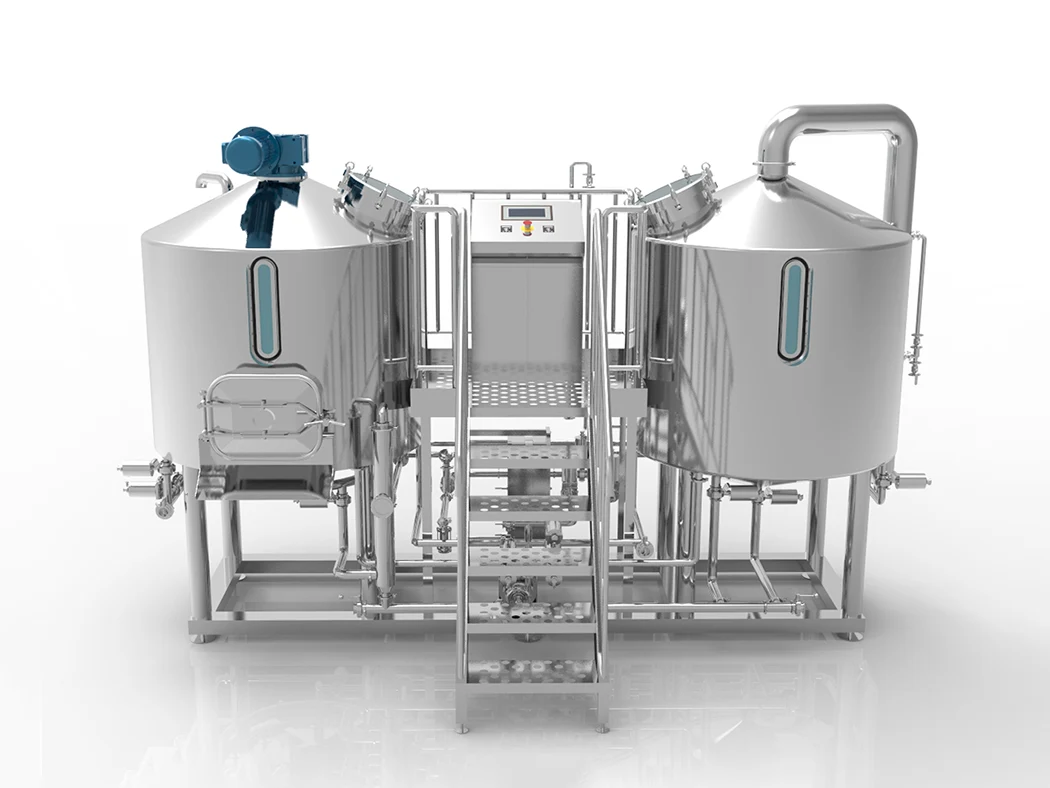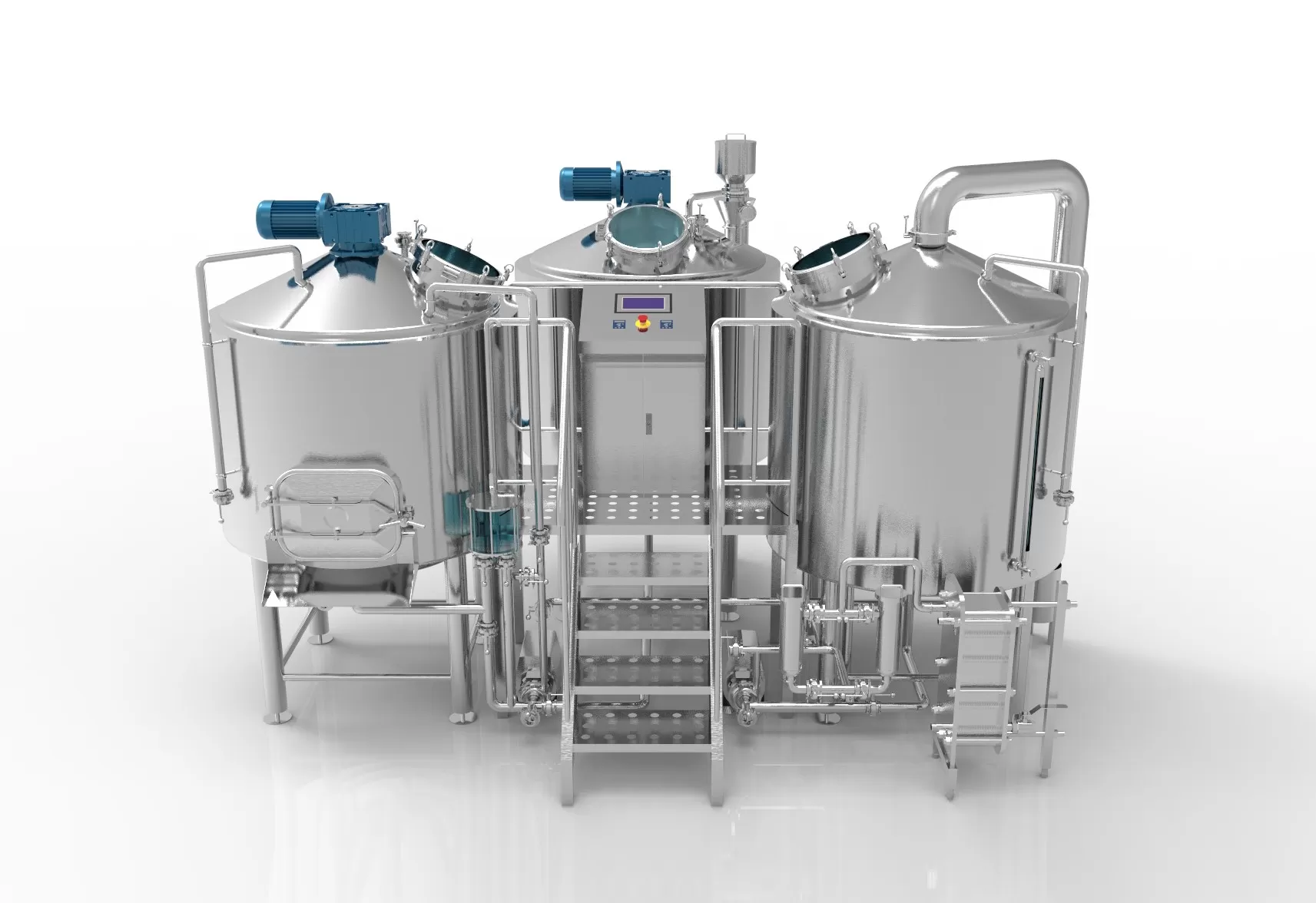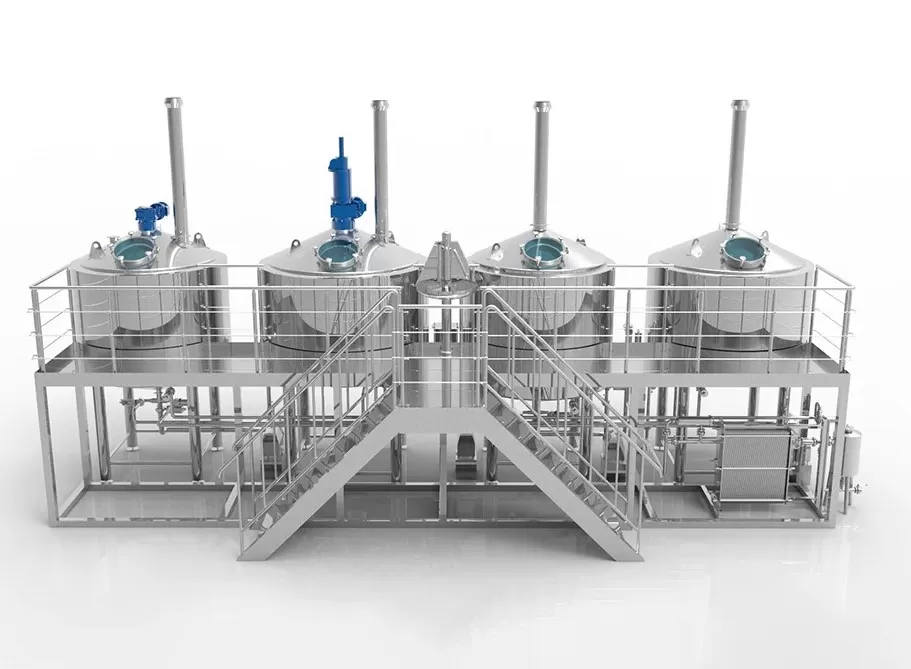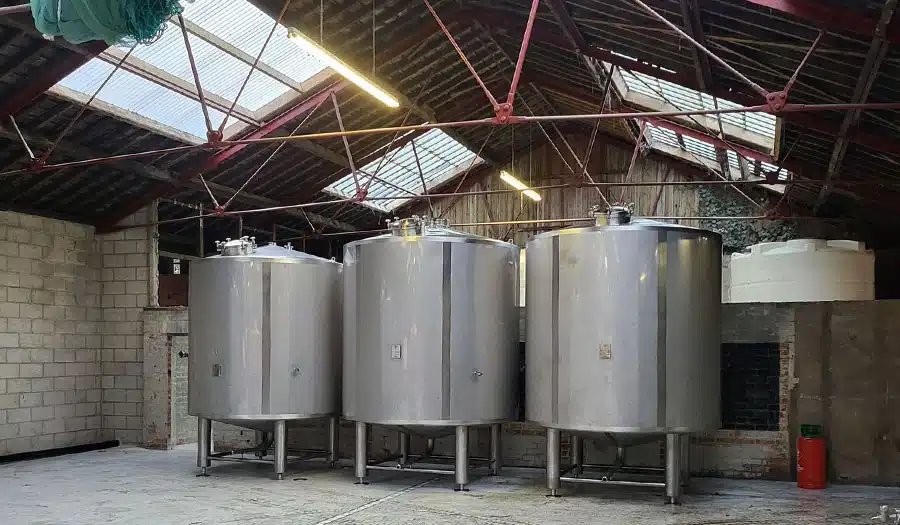스테인리스 스틸 저장 탱크 are widely used in food, chemical, pharmaceutical, environmental protection, and other industries due to their strong corrosion resistance, good sealing performance, stable structure, and long service life. In different industries, the demand for stainless steel storage tanks is different. For example, the food industry focuses on hygiene standards, while the chemical industry pays more attention to corrosion resistance. Therefore, it is crucial for enterprises to reasonably choose the right stainless steel storage tank. This article will introduce in detail the demand for stainless steel storage tanks in various industries, focusing on stainless steel storage tanks in the food industry, and exploring its importance and selection methods.
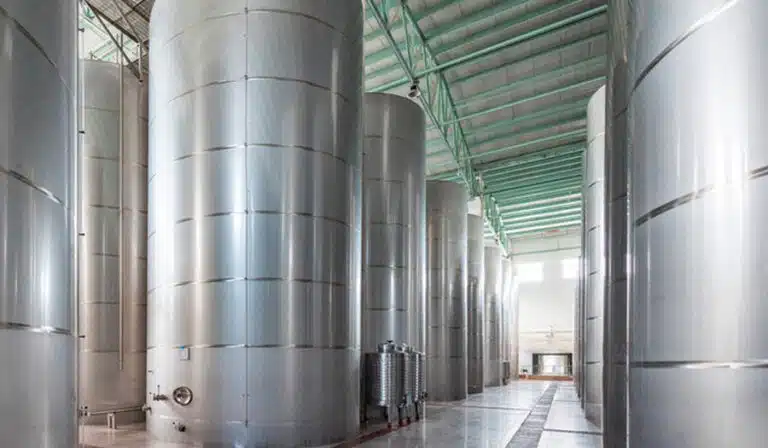
Importance of stainless steel storage tanks
Ensure the safety of materials.
Stainless steel storage tanks are made of high-quality stainless steel materials (such as 304, 316L, etc.), which can effectively prevent the materials in the tank from being contaminated or chemically reacted, and ensure the purity of the materials. They are especially suitable for food, medicine, and other industries.
Improve storage efficiency
Compared with traditional plastic tanks or carbon steel tanks, stainless steel storage tanks have higher strength and durability. They can not only store various liquids and powders for a long time, but also operate stably under high temperature, low temperature or high pressure environments, thereby improving production efficiency.
Extend service life and reduce maintenance costs.
Stainless steel storage tanks have strong corrosion resistance and a service life much longer than ordinary storage tanks, which can reduce the cost of replacement and maintenance.
Meet industry standards and regulatory requirements.
The food, pharmaceutical, and other industries have extremely high requirements for the hygiene of storage equipment. Stainless steel storage tanks comply with relevant industry standards such as GMP (Good Manufacturing Practice) to ensure product safety.
The demand for stainless steel storage tanks in the food industry
The food industry has extremely strict requirements for storage tanks. Not only must they ensure the hygiene and safety of food, but they must also comply with relevant regulations in the food industry, such as HACCP (Hazard Analysis and Critical Control Points), GMP, etc. The food industry is mainly used to store liquid or solid foods such as milk, juice, soy sauce, alcohol, and condiments.
- 304 stainless steel: Good corrosion resistance, suitable for most food storage, such as milk, beverages, purified water, etc.
- 316L stainless steel: Contains molybdenum elements, with stronger corrosion resistance, suitable for acidic and alkaline foods or high-temperature processed foods, such as juice, alcohol, fermented foods, etc.
Structural features of stainless steel storage tanks in the food industry
- Polishing inside and outside: prevent food residues, easy to clean and sterilize, and meet food hygiene standards.
- Good sealing performance: adopts an aseptic design to prevent air and microorganisms from entering, ensuring that food does not deteriorate.
- Equipped with stirring device (optional): suitable for foods that need to be evenly stirred, such as dairy products, soy sauce, and juice.
- Insulation layer design (optional): suitable for foods that need to be stored at a constant temperature, such as milk, chocolate, etc.
Common applications of stainless steel storage tanks in the food industry
- Dairy industry: used to store fresh milk, yogurt, cream, etc., requiring a sterile environment.
- Beverage industry: storage of juice, carbonated drinks, purified water, tea drinks, etc.
- Winemaking industry: fermentation and storage of beer, wine, liquor, etc.
- Condiment industry: storage of condiments such as soy sauce, vinegar, and cooking oil.
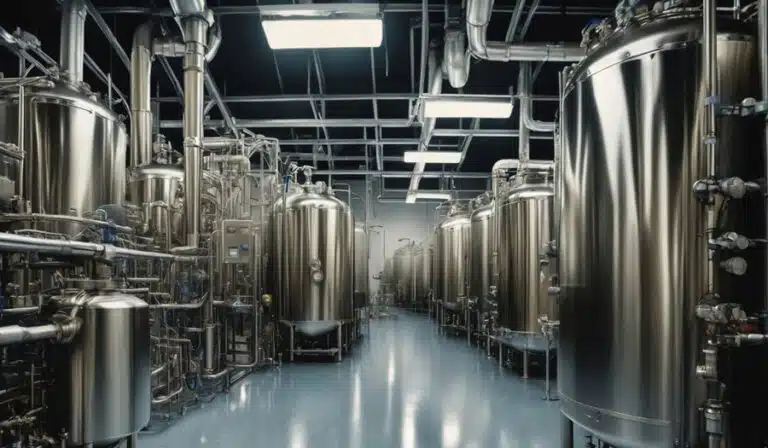
Chemical industry's demand for stainless steel storage tanks
The materials stored in the chemical industry are usually corrosive, so the corrosion resistance of the storage tanks is relatively high.
- 304 stainless steel: suitable for less corrosive chemicals, such as some solvents and common chemical liquids.
- 316L stainless steel: resistant to strong acids and alkalis, suitable for storing highly corrosive chemicals, such as nitric acid and sulfuric acid.
Special design of storage tanks in the chemical industry
- Anti-corrosion coating: When storing strong acids and alkalis, anti-corrosion coating can be added to improve the durability of the tank.
- High-temperature and high-pressure resistant design: Some chemicals need to be stored under a high temperature or high-pressure environment, and the storage tank needs to have the corresponding pressure resistance.
The pharmaceutical industry's demand for stainless steel storage tanks
The pharmaceutical industry has extremely high requirements for the cleanliness of stainless steel storage tanks, usually requiring compliance with GMP standards. 316L stainless steel is the preferred material in the pharmaceutical industry, with excellent corrosion resistance and aseptic properties.
Special requirements for storage tanks in the pharmaceutical industry
- Aseptic design: CIP (cleaning in place) system and SIP (sterilization in place) system are required to ensure the sterility of the tank.
- Mirror polishing: prevent drug residues and avoid cross-contamination.
- Precise temperature control: suitable for biopharmaceuticals, vaccine storage, etc.
The environmental protection industry's demand for stainless steel storage tanks
The environmental protection industry is mainly used to store sewage, waste liquid, etc., requiring storage tanks to have strong corrosion resistance and sealing performance. 316L or higher grade stainless steel to ensure acid and alkali corrosion resistance.
- Strong sealing performance: prevent harmful gas leakage and protect the environment.
- Strong weather resistance: adapt to outdoor storage needs, wind and rain resistance, UV resistance.
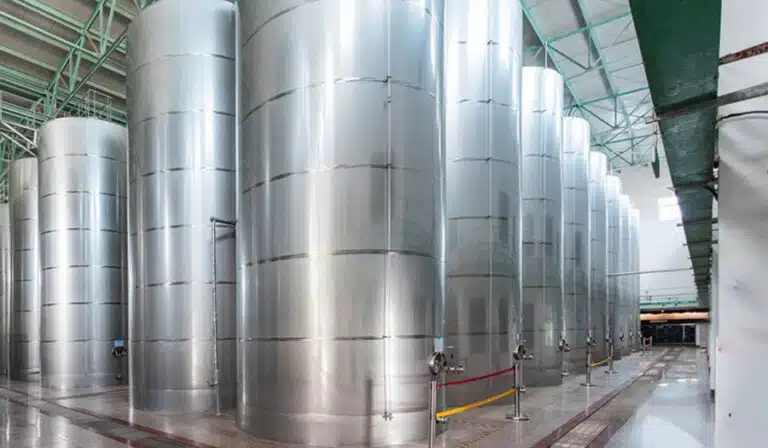
How to choose a suitable stainless steel storage tank?
Choose the material according to the nature of the stored material.
Different stainless steel materials are suitable for different material storage needs. The food and pharmaceutical industries usually choose 304 or 316L stainless steel to ensure hygiene, safety, and corrosion resistance. The chemical industry requires materials with higher corrosion resistance, such as 316L or duplex stainless steel, to adapt to the storage of corrosive substances such as strong acids and alkalis. The environmental protection industry needs to combine the complexity of the storage medium, choose materials with stronger corrosion resistance, or add anti-corrosion coatings in the tank. The right material selection can effectively extend the service life of the storage tank while ensuring the stability of the stored materials.
Choose the tank structure according to storage needs.
The structural design of the storage tank directly affects the use effect and storage efficiency. Depending on the storage volume, small, medium, or large storage tanks can be selected to meet different production scale requirements. Some materials need to be evenly stirred, and a tank with a stirring device can be selected; if a specific temperature needs to be maintained, a storage tank with insulation or cooling function should be selected. For materials that need to be stored under high pressure or vacuum conditions, the pressure resistance design of the tank is also crucial. Reasonable structural design can not only improve the use efficiency of the storage tank but also reduce energy consumption and maintenance costs.
Pay attention to the safety performance of storage tanks.
The safety performance of stainless steel storage tanks is related to the stability of enterprise production and personnel safety. Storage tanks must have good sealing performance to prevent external contamination or internal material leakage. For storage tanks that store volatile or flammable and explosive substances, an explosion-proof design is required to ensure safe operation under extreme conditions. The pressure resistance and impact resistance of the tank are also key factors affecting safety, especially in the chemical and pharmaceutical industries. The stability of storage tanks under high temperatures and high-pressure conditions is particularly important. In addition, enterprises should regularly inspect and maintain storage tanks to ensure their long-term safe operation.
Ensure that storage tanks meet industry standards.
Different industries have strict standards and specifications for stainless steel storage tanks. The food industry needs to comply with food safety standards such as HACCP and GMP to ensure that the tank is hygienic and pollution-free. Storage tanks in the pharmaceutical industry should meet the Good Manufacturing Practice (GMP) for pharmaceuticals and have an aseptic design. Storage tanks in the chemical industry need to comply with chemical safety standards and pass corrosion resistance tests. The environmental protection industry requires storage tanks to have good sealing to prevent the leakage of harmful substances. Choosing stainless steel storage tanks that meet industry standards can ensure product quality and avoid production being affected by substandard equipment.
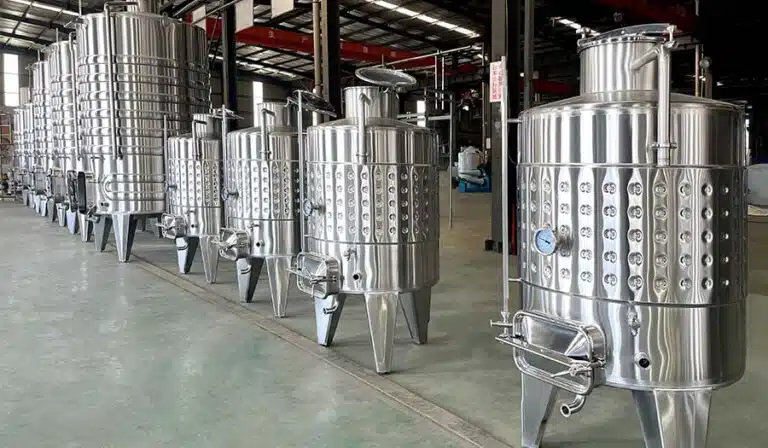
Choose the right supplier.
High-quality stainless steel storage tank suppliers can provide products that meet industry standards and guarantee long-term and stable after-sales service. When choosing a supplier, manufacturers with ISO, CE, and other certifications should be given priority to ensure reliable product quality. In addition, the supplier’s production process, delivery capabilities, installation services, and after-sales maintenance capabilities are also important considerations. Enterprises should give priority to suppliers with rich industry experience and good customer reviews to ensure that the purchased stainless steel storage tanks can operate stably for a long time and reduce maintenance costs.
Cost evaluation combined with the company's budget
When choosing a stainless steel storage tank, in addition to considering quality and performance, it is also necessary to make a reasonable evaluation combined with the company’s budget. 304 stainless steel storage tanks are relatively cheap and suitable for most food and general chemical applications, while 316L stainless steel is more expensive, but it has stronger corrosion resistance and is suitable for high-demand industries. Storage tanks with special structures, such as equipment with stirring, heating, or cooling functions, will have increased costs. Choosing the most cost-effective storage tank within the budget can not only ensure production needs but also control the company’s equipment investment costs.
Pay attention to the maintenance and cleaning of storage tanks.
Regular maintenance and cleaning of stainless steel storage tanks can help extend the life of the equipment and maintain the safety of stored materials. Storage tanks in the food and pharmaceutical industries need to have an easy-to-clean design and support CIP (cleaning in place) or SIP (sterilization in place) systems to ensure a sterile environment. Storage tanks in the chemical and environmental protection industries need to regularly check the corrosion resistance of the tank body to prevent metal fatigue or corrosion damage caused by long-term use. Choosing easy-to-maintain and easy-to-clean storage tanks can reduce operating costs and improve production efficiency.
결론
Stainless steel storage tanks are widely used in many industries such as food, chemical, pharmaceutical, and environmental protection. Different industries have different requirements for the material, structure, safety, and standards of storage tanks. Therefore, when choosing stainless steel storage tanks, companies need to comprehensively consider the characteristics of the stored materials, tank structure, industry standards, safety performance, supplier qualifications, and long-term maintenance costs. Reasonable selection of stainless steel storage tanks can not only improve production efficiency and ensure material safety but also reduce equipment maintenance costs and meet industry regulations. Companies should choose the most suitable storage tanks based on their own industry needs, combined with product quality, functional configuration, and budget to ensure the safe and stable operation of the production process.

